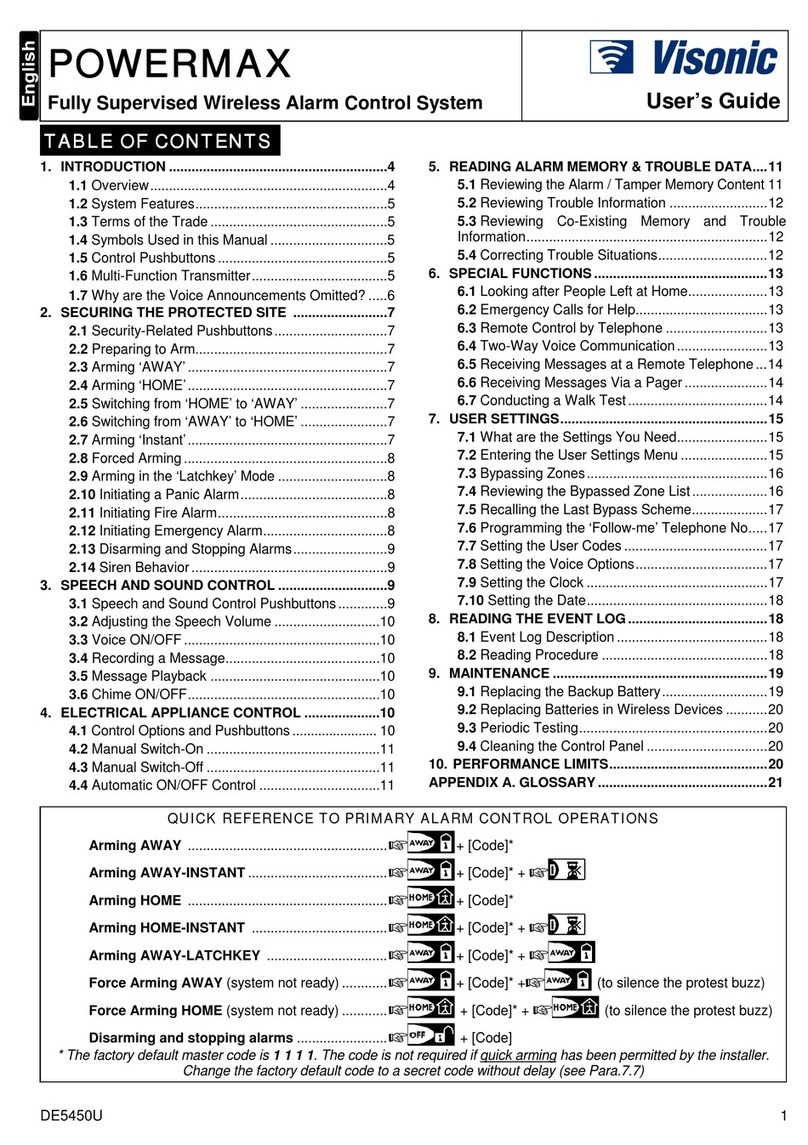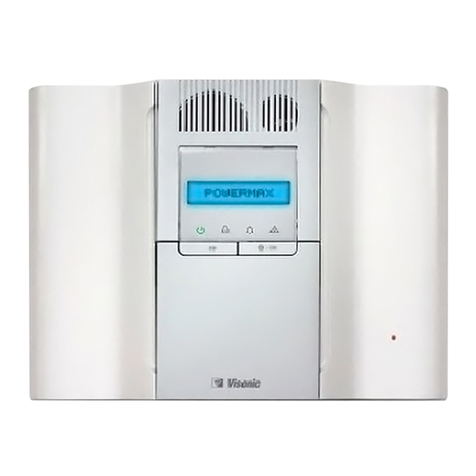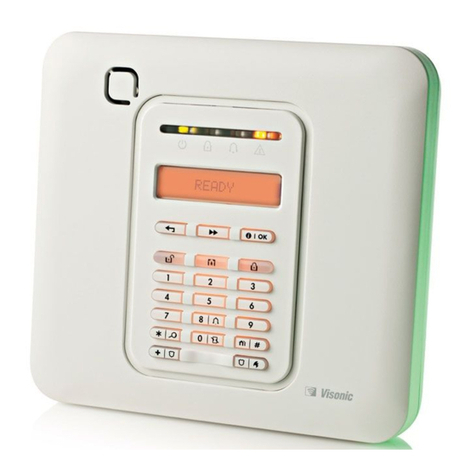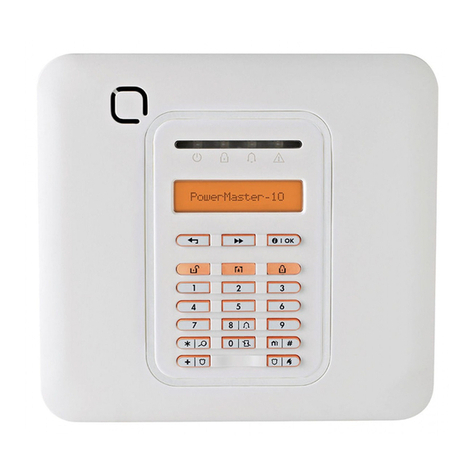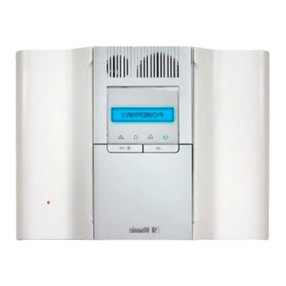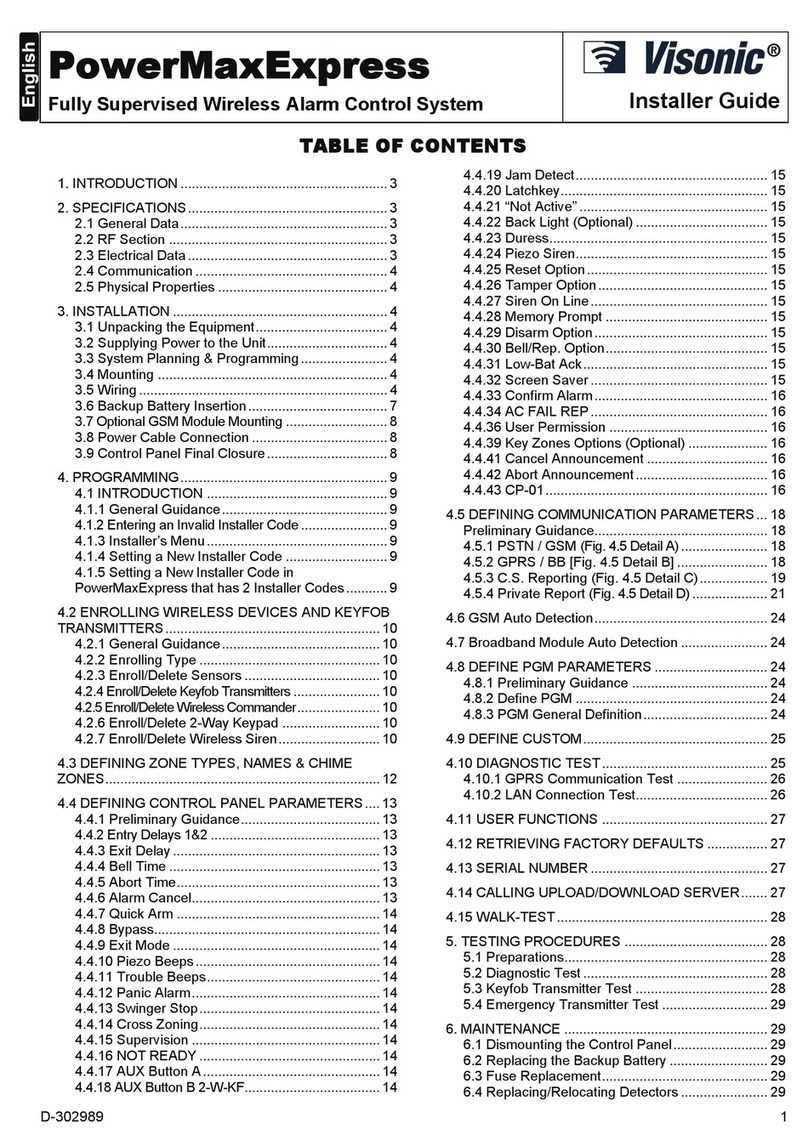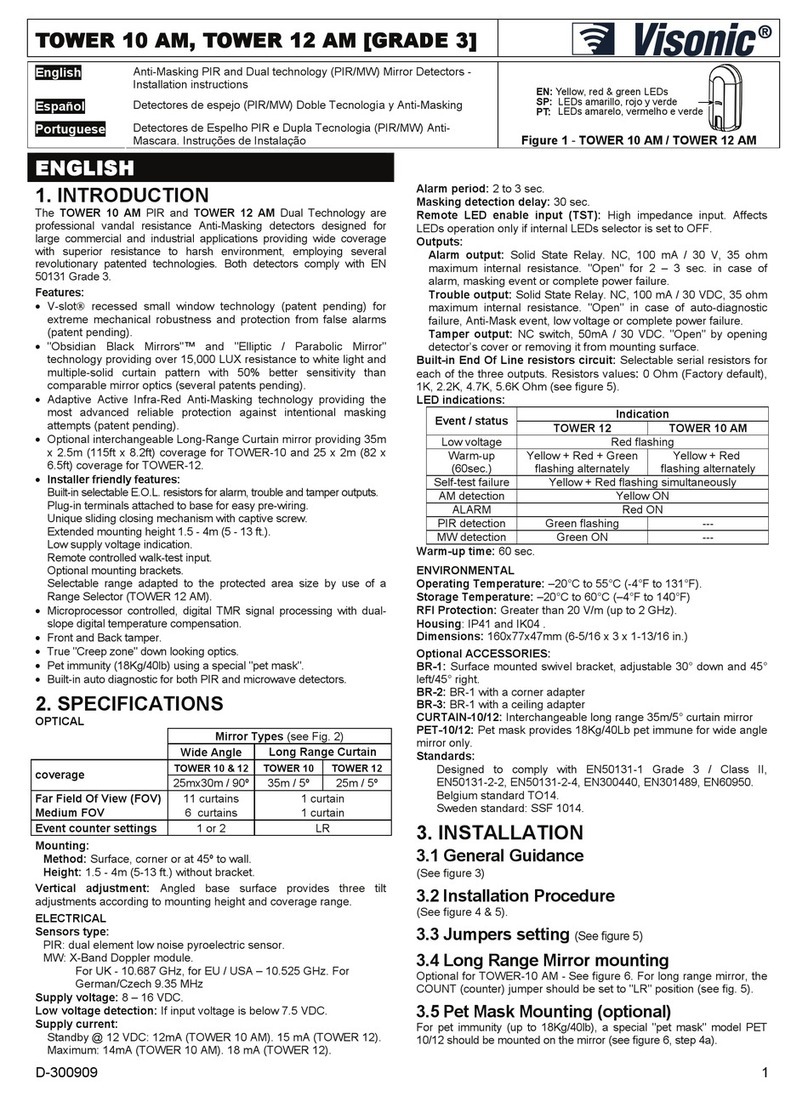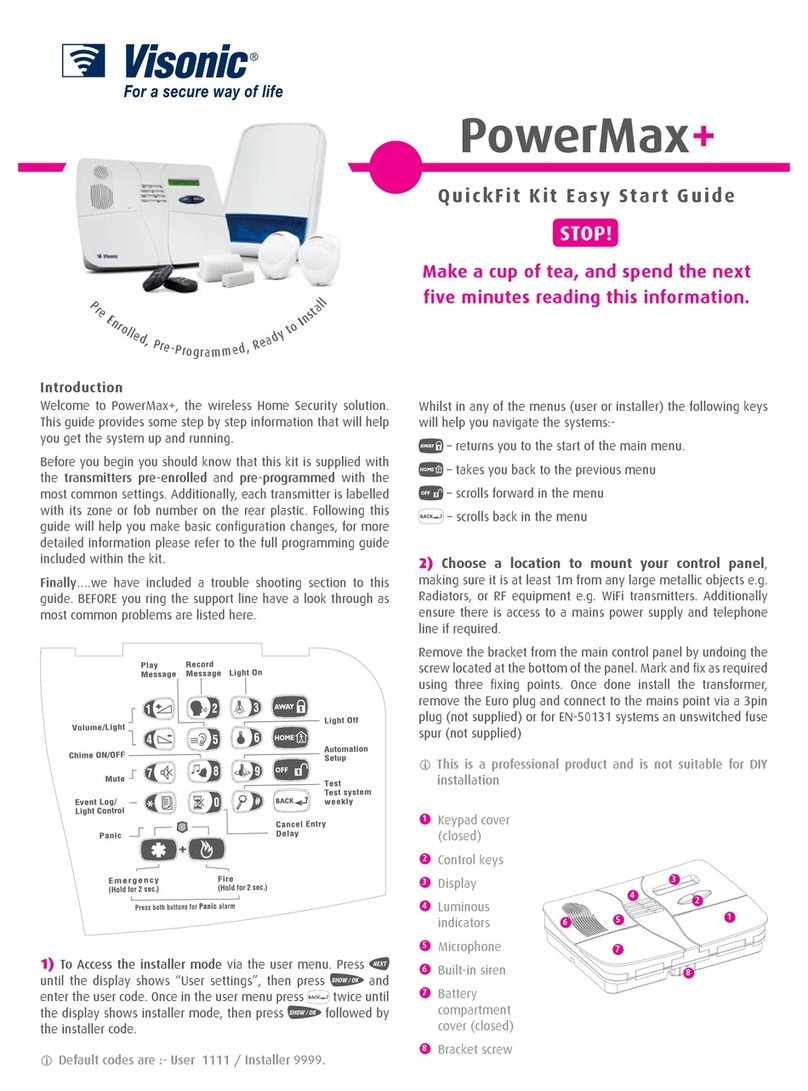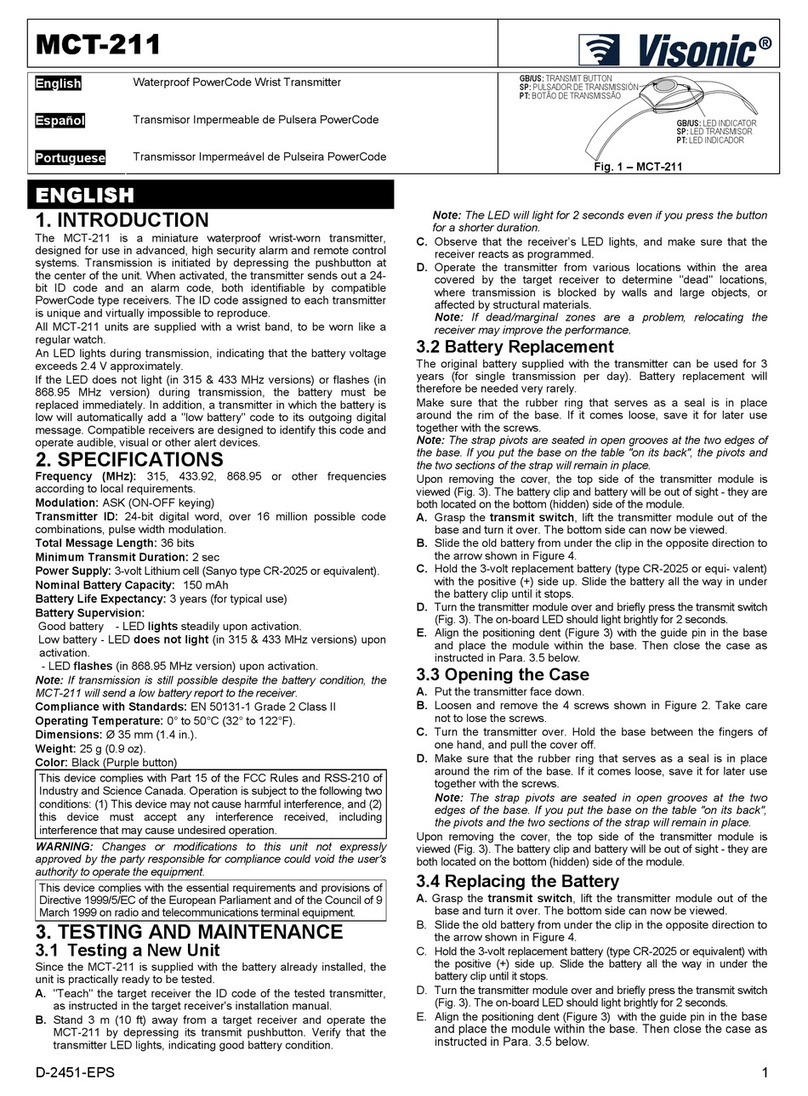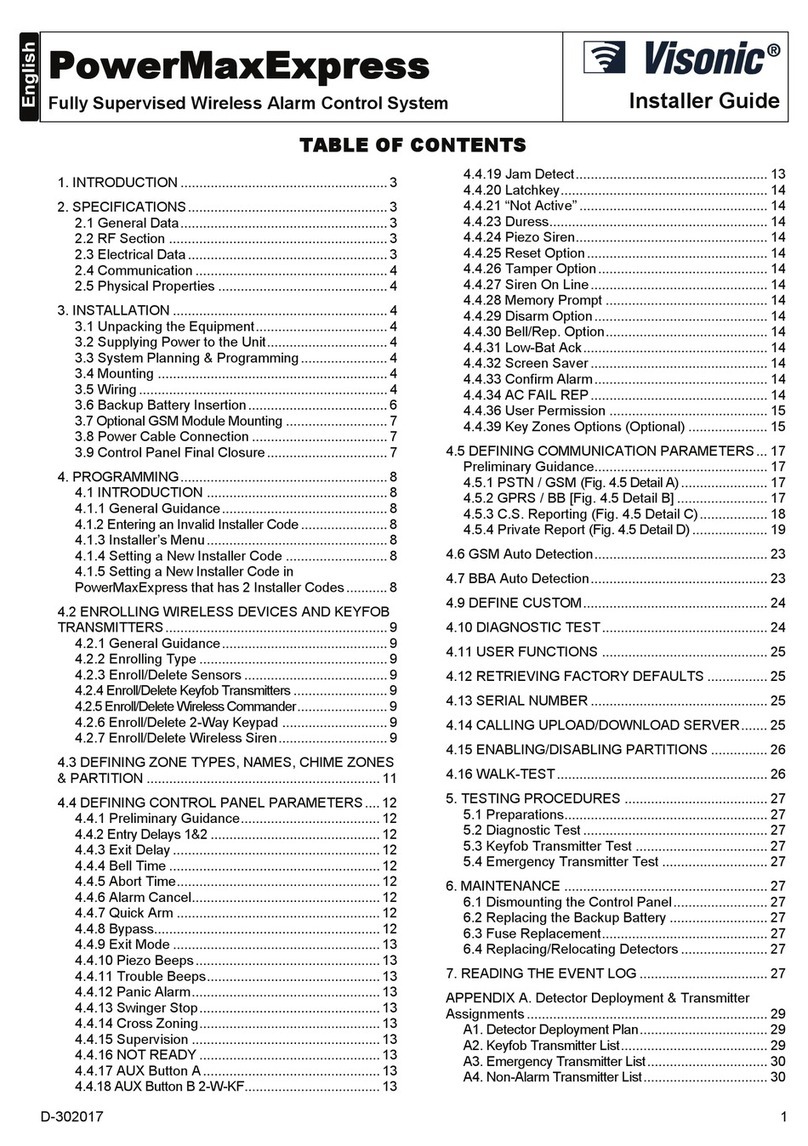
10 DE5110
'/7:2:$<&20081,&$725
'HVFULSWLRQ DQG 8VH
The DL-1000 communicator module is supplied as part of the
MAESTRO-1600DL.
A board-to-board connector on the DL-1000 left edge (Fig. 4.1)
mates with a socket at upper left edge of the alarm control module.
The communicator is triggered into action by the alarm control
module, and can be programmed to communicate with central
stations or private telephones, as required. The communication
protocol is selected in the course of programming (refer to the
programming manual).
The communicator is designed and programmed to play two roles:
• Event Reporting: Once an event occurs, the communicator
calls the telephone numbers programmed by the installer or by
the user. When communication is established, the
communicator reports the event (or events) by sending DTMF
or pulse code sequences (if the central station mode has been
selected) or two kinds of alarm tone signals (if private telephone
mode has been selected). Acknowledgement is expected from
the called party for each event reported, or else communicator
will report the event repeatedly until factory-programmed
number of message repetitions is exceeded.
• Interaction with a Remote Computer: The DL-1000 and the
control module combine together to handle Download/Upload
requests from a remote computer. These operations require a
remote modem - the RM-1000 - at the remote computer's end of
the line and the RPM-1 software package (see Appendix A).
The remote modem and the software also allow full control of
the alarm system by the remote computer (arming, disarming,
bypassing zones, displaying zone status etc.). To assume
control, the remote station operator establishes telephone
communication with the protected premises (see Chapter 6 in
the programming manual). DTMF code sequences are then sent
by the remote station over the telephone line. The DL-1000
interprets these DTMF codes and transfers commands, new
parameters and data-upload requests to the control module.
The control module will carry out the commands, or reprogram
itself or allow upload, as the case may be.
2SHUDWLRQ 5RXWLQH
A. Reporting to Central Stations
Once triggered into operation by the occurrence of an event, the
communicator carries out the following sequence of operations:
(1) It seizes the line and waits 10 seconds for dialing tone.
(2) Upon detection of a 2-second long dialing tone, the
communicator starts calling the first-priority telephone number
of the first central station.
Note: Without dial tone, the communicator goes "on hook" for
about 5 seconds, then seizes the line again to wait for dial tone.
If there is still no tone, dialing starts anyway, except in cases
where a hexadecimal "D" is programmed as a prefix to the
telephone number. With a D-prefix, dialing will not take place
unless a dial tone is detected (see the Programming Manual for
additional information).
(3) Once the call is answered, the communicator waits 16 seconds
for a GO-AHEAD signal from the central station. To prolong
this standby period, a hexadecimal E programmed at the end of
the telephone number will introduce an additional 10 second
delay. If there is no GO AHEAD, the communicator will go on
hook and redial the second priority phone number for that
central station.
Note: If there is no second phone number, the first number will
be called again until the preprogrammed maximum number of
dialing attempts is reached.
(4) If a GO-AHEAD signal is received within 16 seconds, the
communicator reports the first event in its transmission queue

